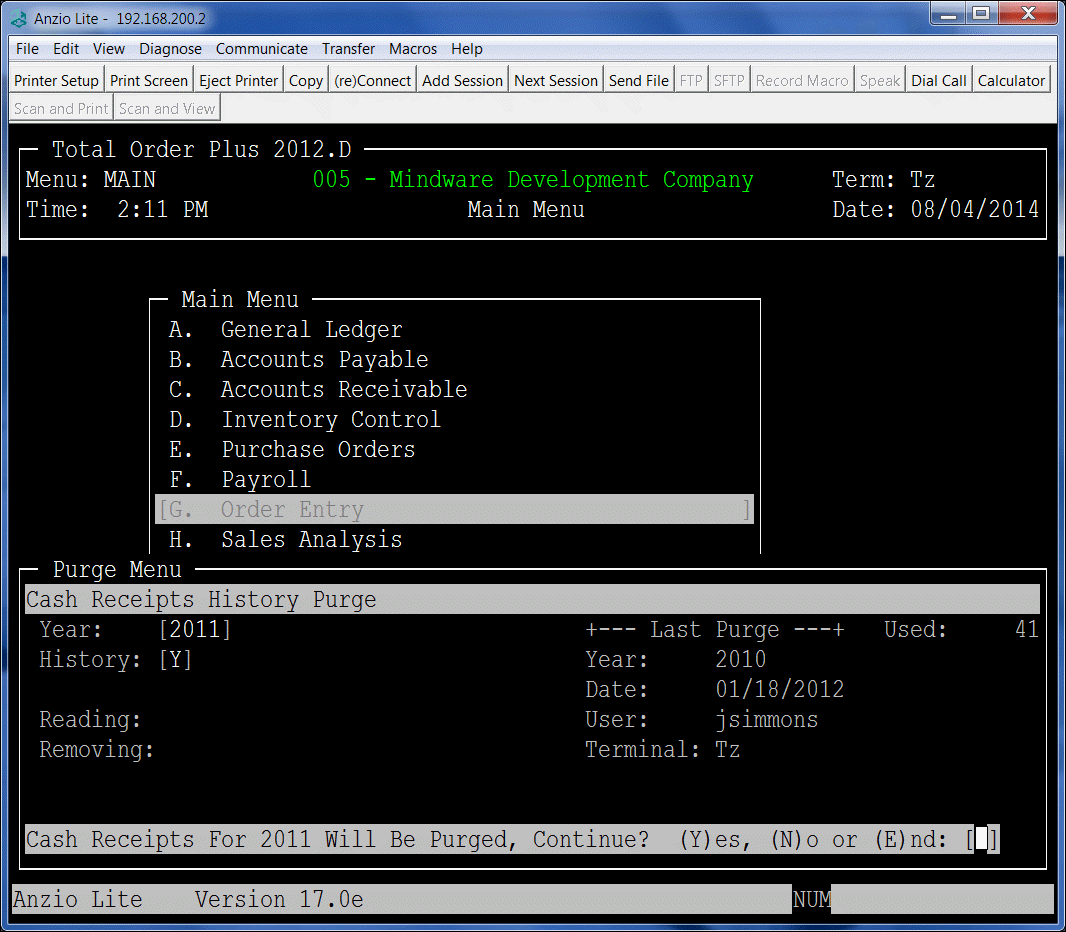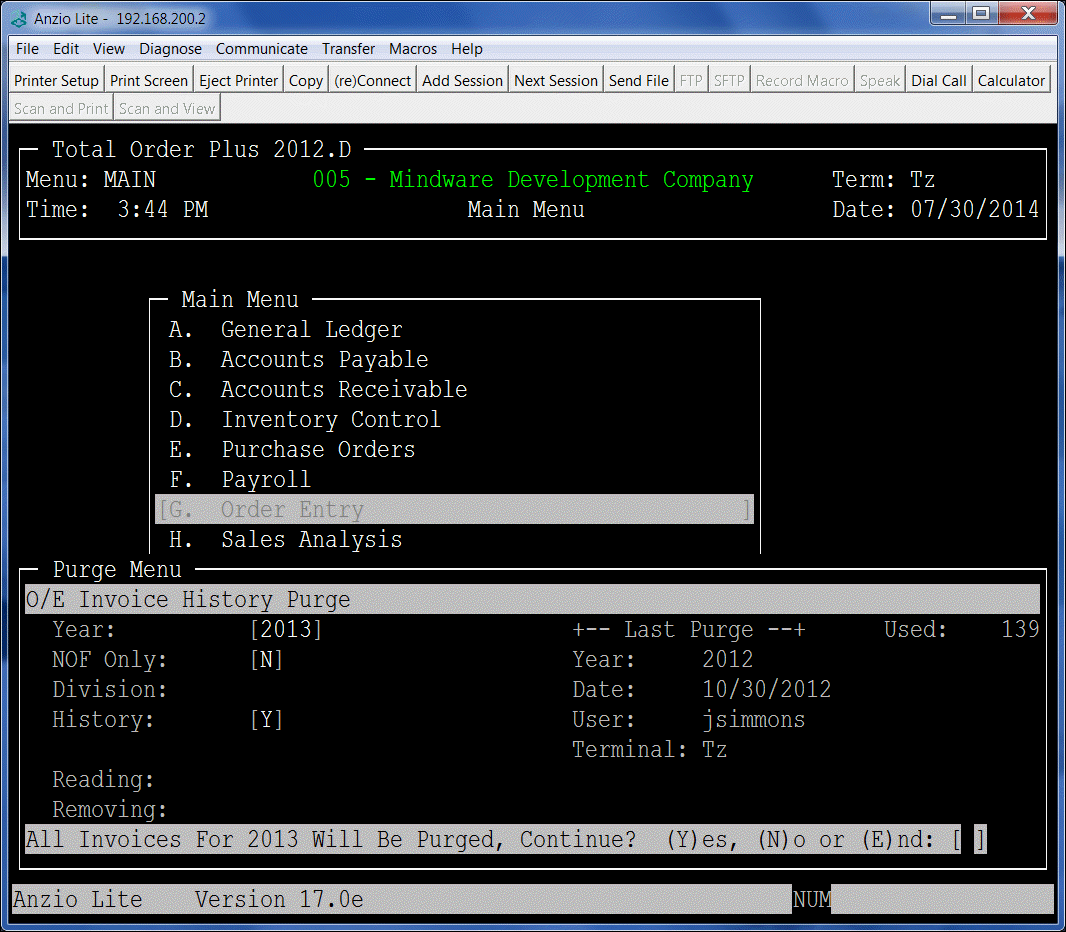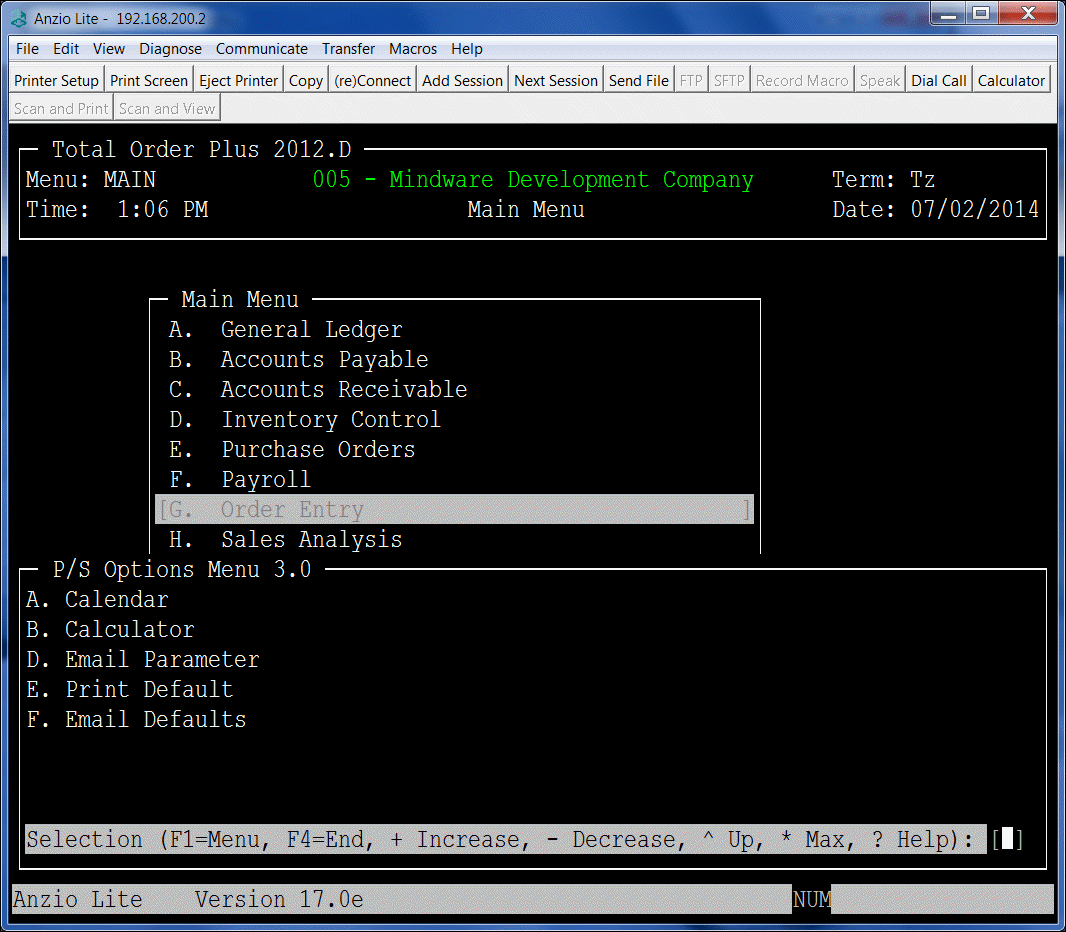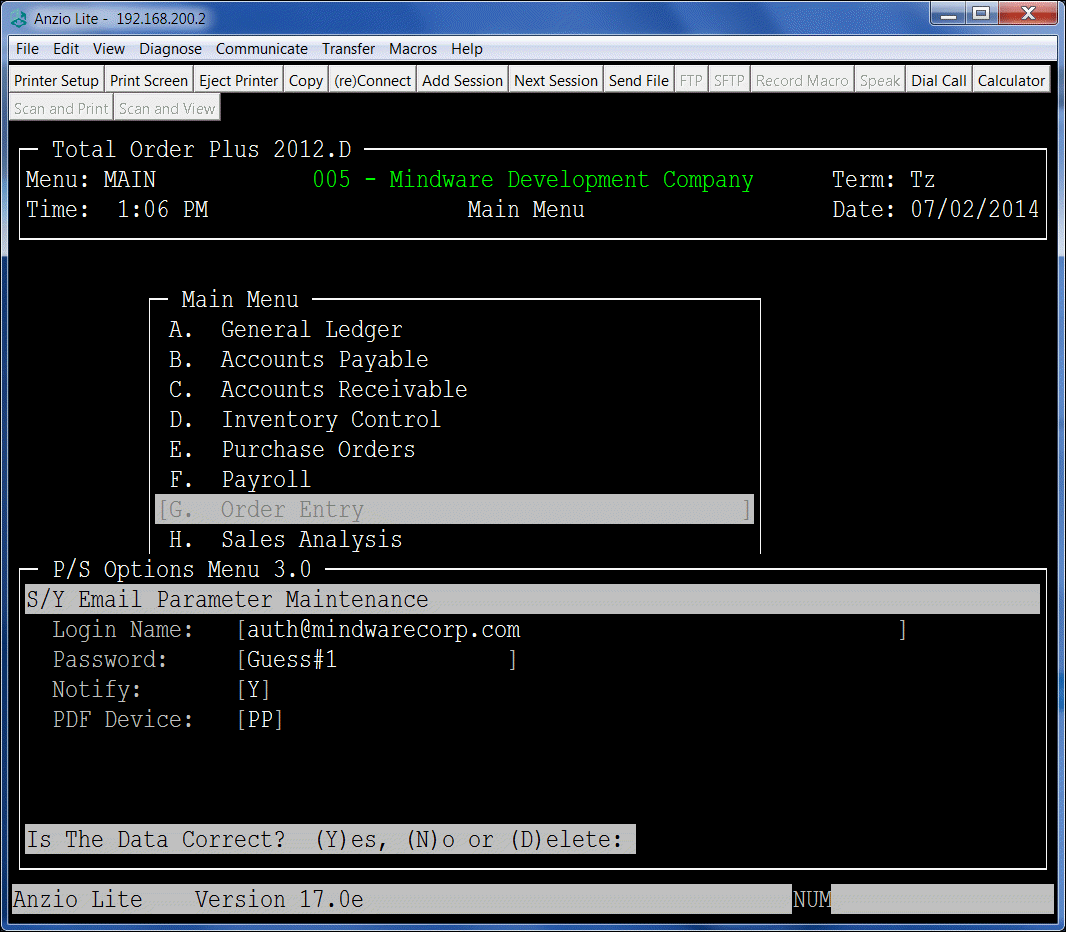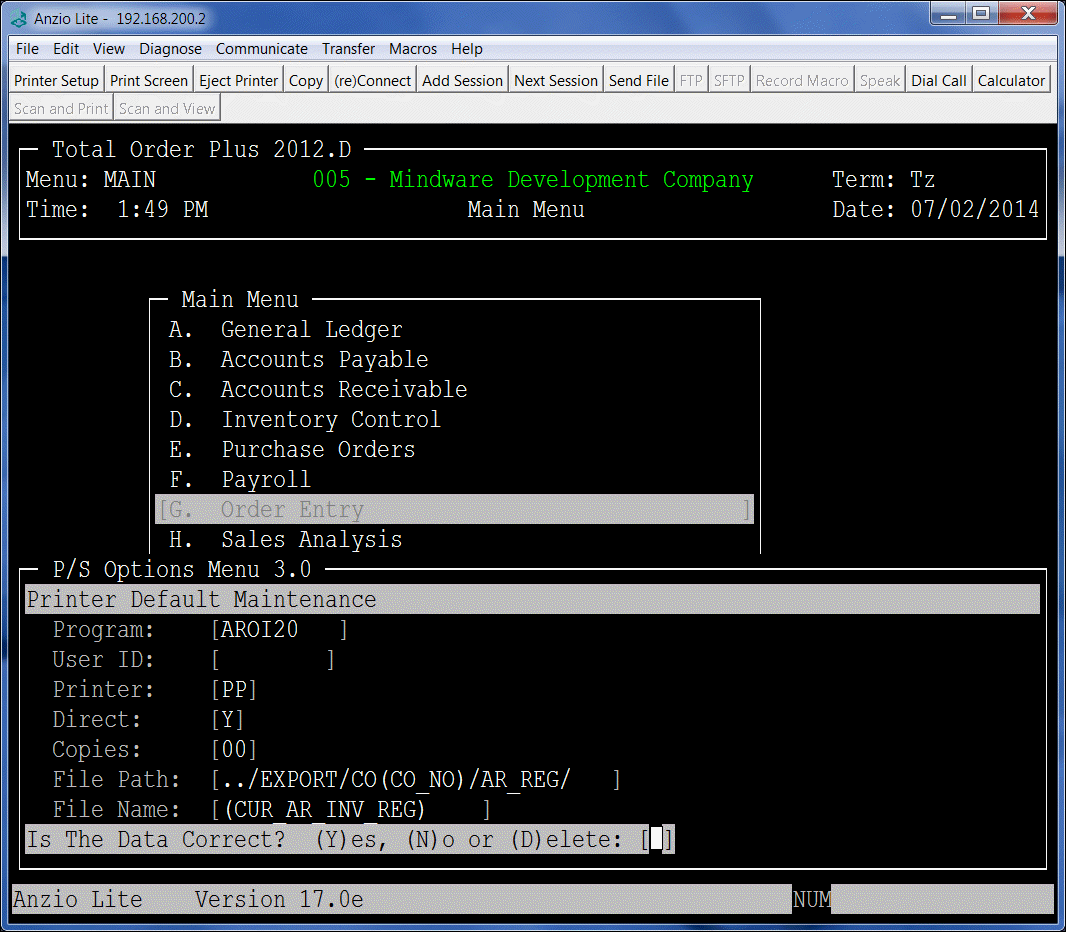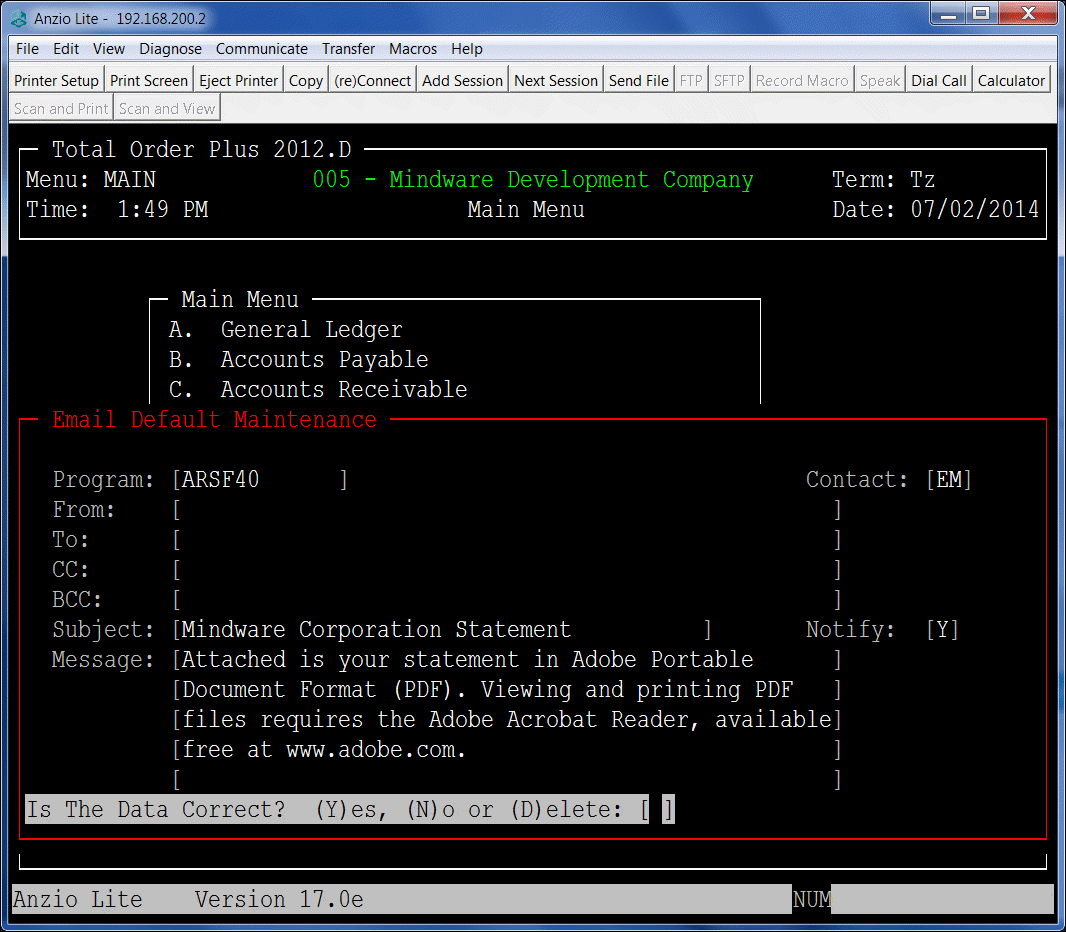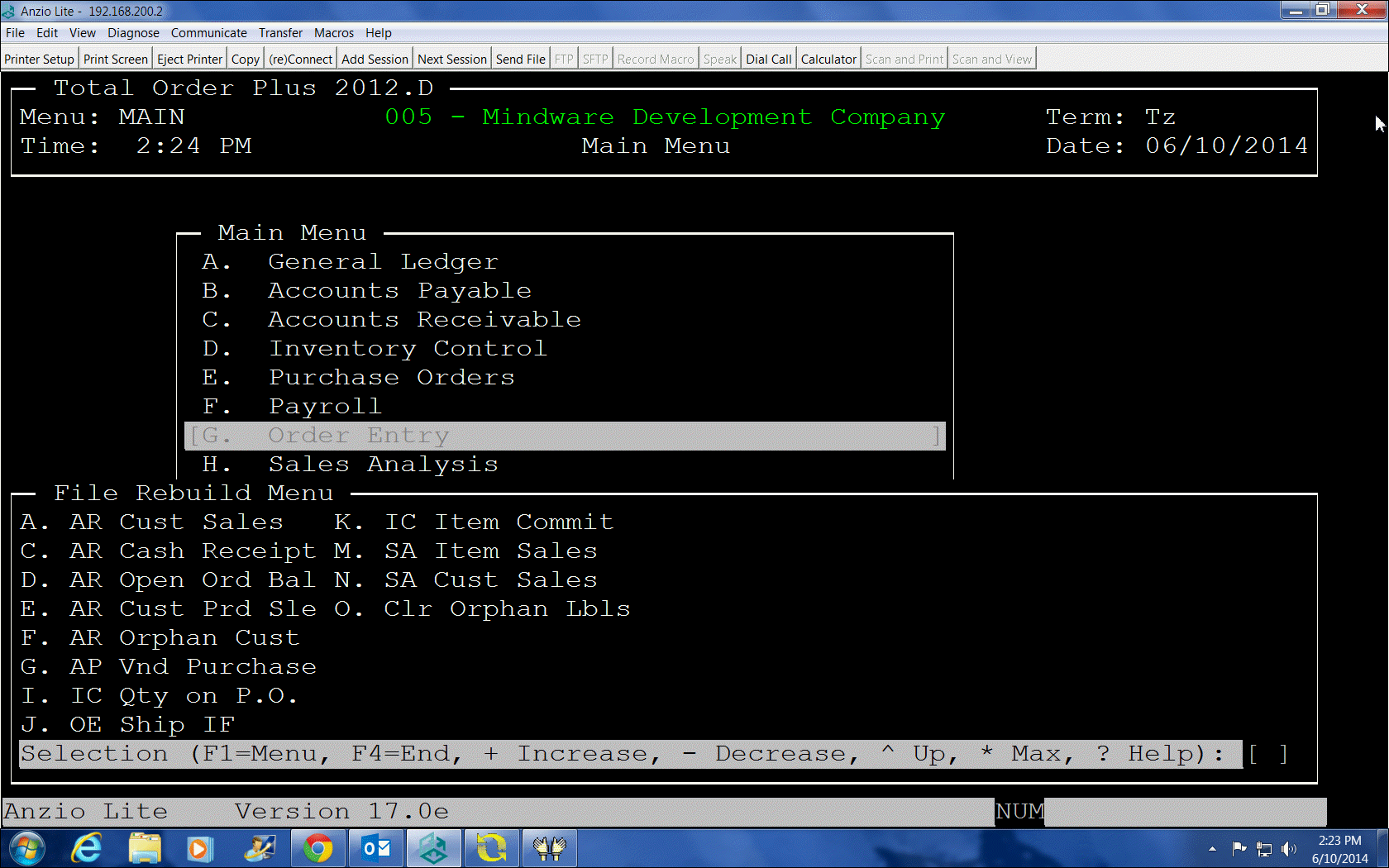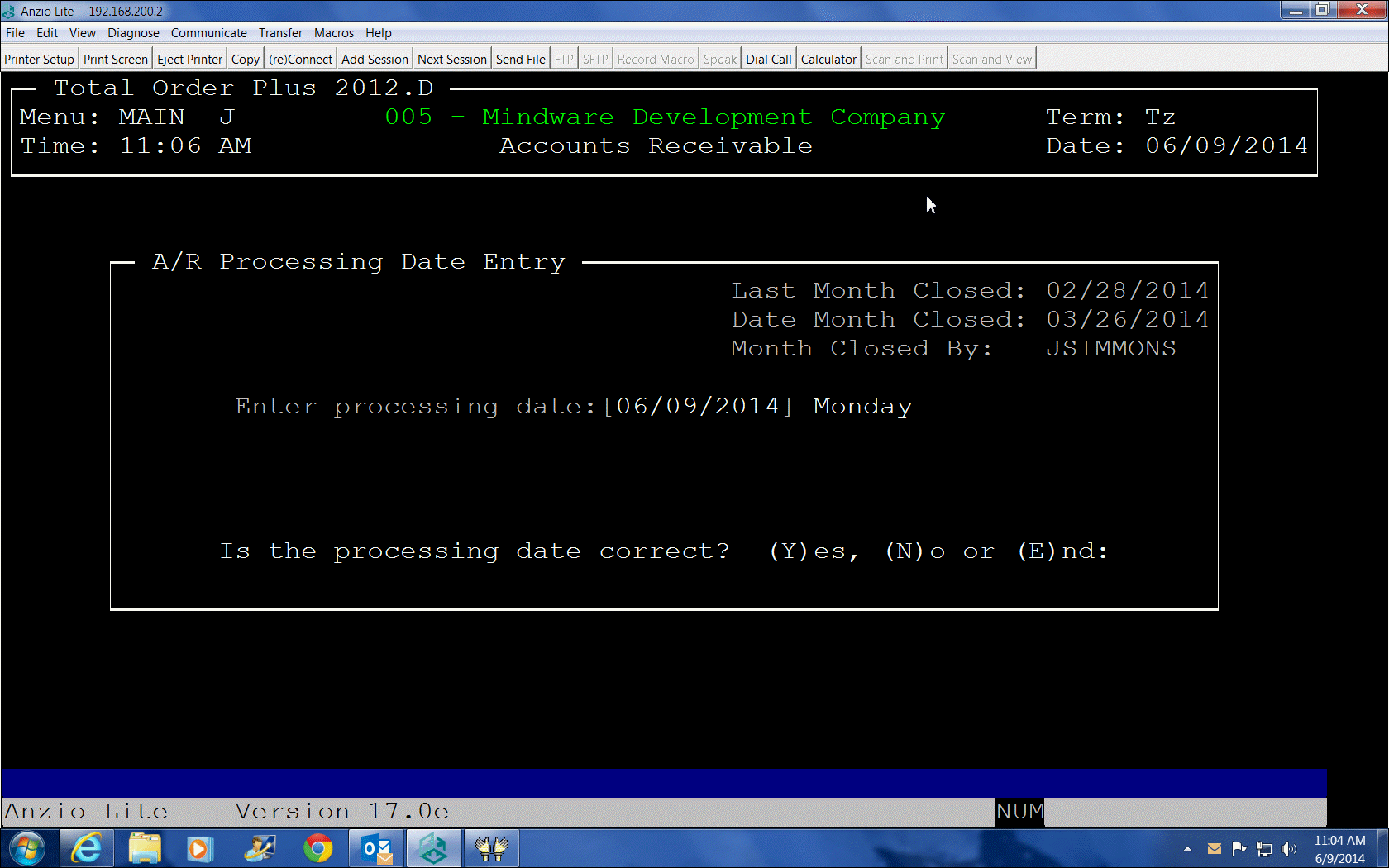The Total Order Plus Report Writer allows users to create their own reports to a printer or file output from the Total Order Plus data base. The file output can be imported into an Excel spreadsheet.
Files in each module are displayed for selection. Once the file is selected, you can select a range of data or you can filter the output by any field within a file. You have options to filter the data by fields that are ‘equal’, ‘greater than’, ‘greater than or equal to’, ‘less than’, ‘less than or equal to’ and ‘not equal to’. You can select a range or filter option or both, as well as select to print to a printer or export to a file. As each field is selected for the report, the print positions for each column displays on your screen. Each TOP module has a Report Writer selection. Follow these steps to create a report:
- Select the Report Writer from any TOP report menu
- The list of available file names will display in the File List
- Use your up or down arrow keys, page up or down keys, or enter a letter to select the file name
Once the file is selected, the File Description name will display on your screen.
Filter Option:
Select R if you want to select a range of items (range of customers, inventory items, salespersons, etc. or if you want to select just one customer, one inventory item, one salesperson, etc.)
Select F if you want to filter the data by selecting certain data fields within the file
Select B which will allow you to use both the Range and Filter options
File Output:
Enter a Y if you want the output to be written to a text file
Notes:
The file name will be displayed on your screen and the text file will be created in the EXPORT folder on the U drive. You can override the file name but the ../EXPORT/ and the .TXT extension must remain.
Include Heading:
Type Y to include report headings
If you selected the (R)ange option, a Print Selection window will allow you to input a range of selections, i.e. customer, vendor, salesperson, inventory items, etc. If you want to select just one customer, item, etc., the first and last code will be the same.
Cursor will continue to the Field Selection screen.
The (F)ilter option will display the Filter Selection window.
Number:
A field sequence number will be assigned to each selection. Press the Enter key to accept
Field:
You will be able to select from a Field List window, each data item you want to use to select for your report. After selecting a field, you will be prompted with specific options to apply to each field you select to filter.
Function:
Select a function 1-6: 1=Equal, 2=Greater than, 3=Greater than or equal to, 4=Less than, 5=Less than or equal to, 6=Not equal to
Value:
Depending on which function you selected, you will enter a value for the selected field. As an example, if you selected a report to print by a specific salesperson, you would enter the salesperson code in the Value field. The report will filter the data only for that one salesperson.
If you selected to do a range and to filter the data, you will do both of the steps mentioned above.
Once you complete the steps above, you will proceed to the Field Selection window to begin selecting what data fields you want to print for this report, with an option to select all fields by using the F1 key. You must keep in mind, the report cannot exceed 132 print positions when printing to a printer. The number of columns used with each selection is displayed on your screen.
Number:
The field selection number automatically display – press the Enter key to accept
Field List:
A window displays all of the fields within the file that are available to print. Use your arrow keys to move the cursor up and down the selections or press the Enter key to include a field in your report or enter the alpha letter to insert
Press F1 to select all fields in the list
Field:
The name of the field that you selected will display. If you selected an incorrect field name, press F1 to return to the Field List or answer Yes to include the field in your report.
Once you have completed your selection, press F4 to either print the report or print the report to a file.
The TOP Printer Menu displays for you to select a printer for the report or the data will be written to your selected file name and the cursor will return to the TOP Report Menu.

